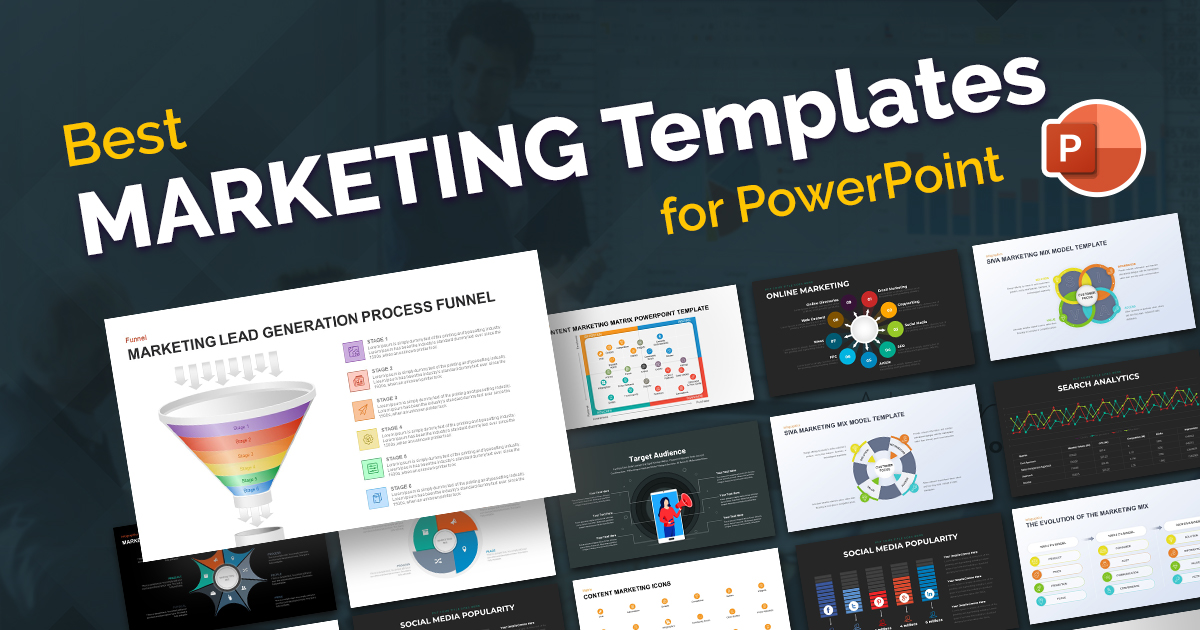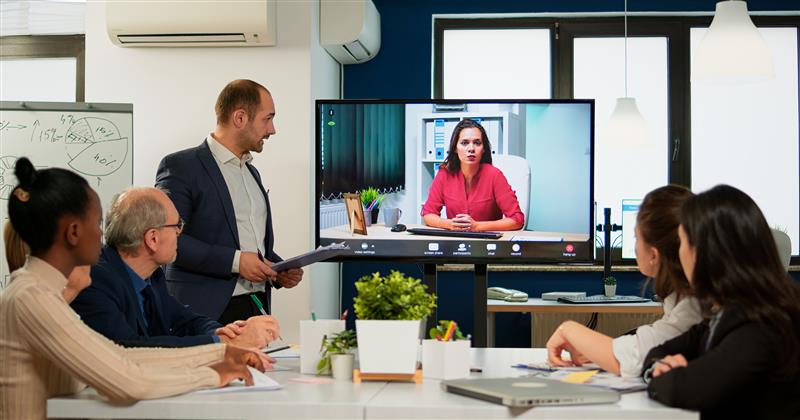- Why Continuous Learning Matters in Presentation Design Teams
- Building the Foundation for Continuous Learning
- Practical Training and Development Methodologies
- Leadership Approaches for Learning-Focused Teams
- Encouraging Experimentation and Creative Risk-Taking
- Utilizing Collaboration and Feedback for Growth
- Measuring Learning Impact and Iterating
- Conclusion: Creating a Sustainable Learning Ecosystem
How to Foster a Culture of Continuous Learning and Innovation in Presentation Design Teams

I’ve spent over a decade managing presentation design teams across various industries, and if there’s one thing that everyone misses, it’s that the difference between good and exceptional teams lies in their approach to learning and innovation. In today’s rapidly evolving business environment, presentation design has become a critical strategic function rather than just a creative service.
The most successful presentation design teams I’ve led share one fundamental characteristic: they embrace continuous learning as a core value. These teams consistently produce cutting-edge work because they’re constantly expanding their skills, experimenting with new techniques, and pushing the boundaries of what’s possible in presentation design.
In this comprehensive guide, I’ll share proven strategies for fostering a culture of continuous learning in presentation design teams based on my experience and extensive research. Whether you’re leading an in-house design department, managing a specialized presentation agency team, or building a presentation function from scratch, these insights will help you develop a team that thrives on knowledge sharing and creative innovation.
Why Continuous Learning Matters in Presentation Design Teams
Presentation design sits at a unique intersection of visual design, storytelling, data visualization, and technical execution. The field evolves at a breakneck pace, with new tools, techniques, and audience expectations emerging constantly. Teams that aren’t actively learning fall behind quickly, while those committed to growth maintain a competitive edge.
According to research, “The most effective presentation design training combines multiple methodologies, including workshops, peer review, and mentorship, to build a culture of continuous learning and design excellence.” (source)
For presentation design teams specifically, continuous learning delivers several critical benefits:
– Technical proficiency: Designers stay current with the latest software features and functionality
– Design trend awareness: Teams can incorporate emerging visual styles that resonate with modern audiences
– Storytelling innovation: Designers develop new approaches to narrative structure and message delivery
– Client satisfaction: Continuously improving teams deliver fresher, more effective presentations
– Employee retention: Learning opportunities increase job satisfaction and reduce turnover
My experience shows that presentation designers are naturally curious professionals who thrive when given opportunities to expand their skills. The challenge for leaders is creating structured yet flexible systems that make learning a natural part of everyday work rather than an occasional add-on activity.
Building the Foundation for Continuous Learning
1. Create a Learning-Centered Team Structure
Before implementing specific learning initiatives, ensure your team structure supports knowledge acquisition and sharing. I’ve found these organizational approaches particularly effective:
Cross-functional project teams: Pair designers with different specialties on projects to facilitate skill transfer. For example, team up a designer strong in data visualization with one who excels at storytelling.
Designated learning champions: Appoint team members to track industry developments and share insights with the broader group. Rotate this responsibility quarterly to distribute the workload and expose everyone to trend-spotting activities.
Skill mapping: Create a comprehensive matrix of presentation design competencies and have team members self-assess their proficiency levels. This identifies both team strengths and learning gaps to address.
Time allocation: Build learning time directly into workloads. I recommend reserving 10-15% of each designer’s hours specifically for skill development and experimentation.
As research indicates, “Fostering continuous learning requires strategies such as bite-sized learning content, communities of practice, cross-functional collaboration, and ongoing feedback.” (source)
2. Establish Clear Learning Objectives
Unfocused learning efforts rarely deliver meaningful results. Work with your team to establish specific, measurable learning objectives aligned with both individual career goals and organizational needs.
I recommend setting learning objectives at three levels:
Team-wide priorities: Skills everyone needs to develop (e.g., mastering a new presentation platform or improving accessibility practices)
Role-specific skills: Learning targets based on job function (e.g., senior designers focusing on presentation strategy, junior designers developing technical proficiency)
Individual development areas: Personalized learning goals based on each team member’s career aspirations and growth opportunities
Document these objectives in individual development plans and revisit them quarterly. This creates accountability while allowing flexibility as project demands and priorities shift.
3. Create Psychological Safety for Learning and Experimentation
Continuous learning cannot thrive in environments where mistakes are punished. Research confirms that “Developing a culture of continuous learning means investing in leadership, collaboration, setting realistic learning goals, and allowing team members space to innovate, experiment, and learn from failures.” (source)
As a leader, model this mindset by:
– Openly sharing your own learning journey and challenges
– Celebrating innovative attempts, even when they don’t fully succeed
– Distinguishing between learning failures (which should be encouraged) and execution failures (which require improvement)
– Creating separate time for experimentation outside of client-facing projects
– Establishing clear guidelines on when and how to take creative risks
I’ve found that teams function best when they understand there are appropriate contexts for experimentation. For instance, create internal projects specifically designed for trying new techniques, while maintaining higher guardrails around client deliverables with tight deadlines.
Practical Training and Development Methodologies
With a foundation in place, implement specific learning approaches tailored to presentation design teams:
1. Structured Skills Training
While much learning happens through practice, some skills require dedicated instruction. A comprehensive approach includes:
Software mastery workshops: Regular sessions on advanced functionality in PowerPoint, Keynote, Google Slides, and design tools like Adobe Creative Suite.
Design principle training: Structured learning on visual design fundamentals, color theory, typography, and composition specifically for presentation contexts.
Presentation-specific masterclasses: Specialized training on areas like data visualization, slide composition, animation techniques, and presentation storytelling.
According to research, “A successful corporate learning strategy integrates continuous learning as a core element, leveraging microlearning, experiential learning, and collaborative learning, reinforced by regular assessment and feedback.” (source)
I’ve found that breaking training into 60-90 minute modules works best for presentation design teams, as it allows for immediate application of new skills to real projects.
2. Peer Learning Systems
Some of the most effective learning happens between colleagues. Implement these peer learning approaches:
Design critiques: Schedule regular critique sessions where designers present work in progress and receive constructive feedback from peers. Establish clear critique guidelines focusing on specific design principles rather than subjective opinions.
Skill-share workshops: Have team members teach each other their specialty areas in structured 30-45 minute sessions. The act of teaching reinforces the presenter’s knowledge while spreading expertise.
Paired design sessions: Schedule time for designers to work together on projects, with one designer taking the lead while narrating their process and decision-making.
Show and tell meetings: Create regular forums where designers can share innovative techniques they’ve discovered or developed. Document these in a searchable knowledge base.
These peer learning approaches create multiple benefits: they strengthen team relationships, increase knowledge transfer efficiency, and develop presentation and communication skills that designers use with clients.
3. External Learning Resources
While internal learning is valuable, exposure to outside perspectives prevents team echo chambers. Incorporate these external resources:
Industry conferences and events: Budget for team members to attend presentation design conferences, design events, and industry gatherings. Require attendees to present key learnings to the full team afterward.
Learning platforms: Provide subscriptions to platforms like LinkedIn Learning, Skillshare, or specialized presentation design courses. Create curated playlists of the most relevant content for your team.
Design community participation: Encourage involvement in presentation design communities like Presentation Guild, SlideShare networks, or local design meetups.
Guest experts: Invite subject matter experts to conduct workshops on specialized topics like executive presentation skills, industry-specific design requirements, or emerging presentation technologies.
Leadership Approaches for Learning-Focused Teams
As a leader, your behavior sets the tone for continuous learning. These leadership practices have proven particularly effective in my experience:
1. Model Continuous Learning
Team members watch what leaders do more than what they say. Demonstrate your commitment to learning by:
– Sharing what you’re currently learning and how you’re applying it
– Being transparent about your own knowledge gaps and growth areas
– Participating in learning activities alongside your team
– Discussing books, articles, and resources you’re exploring
– Showing vulnerability when you don’t know something
When I discover a new presentation technique or resource, I make a point of sharing it with the team, explaining how I’ll use it in my own work. This normalizes the idea that everyone, regardless of seniority, is continuously developing.
2. Integrate Learning Into Workflow
Rather than treating learning as separate from “real work,” weave it into daily operations:
Project kickoff learning: Begin each project by identifying specific skills the team will develop through the work.
Learning-focused project retrospectives: End projects by discussing not just what was delivered but what was learned.
Knowledge documentation: Create systems for capturing and sharing insights from each project, building an evolving body of team knowledge.
Learning-based performance metrics: Include skill development and knowledge sharing in performance evaluations, not just production metrics.
Research supports this integrated approach: “Creating an effective learning culture requires a safe learning environment, engagement beyond formal training, and recognition mechanisms to empower learners to apply new knowledge consistently.” (source)
3. Provide Targeted Resources
Ensure your team has access to the specific resources they need to excel in presentation design:
Curated resource library: Maintain a collection of presentation design books, case studies, templates, and examples of exceptional work.
Design subscriptions: Provide access to premium design assets, fonts, imagery, and tools that expand creative possibilities.
Technology access: Ensure designers can experiment with emerging presentation technologies, from advanced animation software to virtual presentation platforms.
Learning budgets: Allocate individual learning stipends that designers can direct toward their specific development interests.
Encouraging Experimentation and Creative Risk-Taking
Innovation requires experimentation, which inherently involves risk. These approaches help presentation design teams embrace creative exploration:
1. Create Safe Spaces for Experimentation
Establish projects and processes specifically designed for creative exploration:
Internal challenge projects: Develop hypothetical presentation briefs that push designers to stretch beyond conventional approaches.
Innovation time: Allocate regular time (e.g., one day monthly) when designers can work on self-directed experimental projects.
Test audiences: Create opportunities for designers to test experimental approaches with friendly audiences before using them in high-stakes client work.
Concept development process: Implement a structured approach for proposing and testing new presentation concepts before applying them to client deliverables.
2. Reward Creative Courage
Explicitly recognize and reward appropriate risk-taking:
Innovation recognition: Create awards or acknowledgments for the most innovative presentation solutions, even when they weren’t ultimately used.
Process appreciation: Evaluate and reward the quality of the creative process and experimentation, not just final outcomes.
Failure celebration: Periodically share “productive failures” or experiments that didn’t work but produced valuable learning.
One practice I’ve implemented is a quarterly “Failed Forward” showcase where team members share projects that didn’t succeed as planned but generated important insights. This has dramatically increased willingness to experiment.
3. Build Client Relationships That Support Innovation
Help clients become partners in the learning journey:
Education-focused onboarding: Teach clients about your team’s approach to innovation and continuous improvement.
Option presentations: When appropriate, present both conservative and innovative options to clients, expanding their presentation literacy.
Innovation narratives: Share the “behind the scenes” story of how innovative solutions were developed, helping clients appreciate the learning process.
Feedback loops: Create structured ways for clients to contribute to your team’s learning by providing detailed feedback on what worked best in their presentations.
The most innovative presentation work happens when clients understand and value the learning mindset behind your team’s approach.
Utilizing Collaboration and Feedback for Growth
Presentation design is inherently collaborative. Leverage this characteristic to accelerate learning:
1. Structured Feedback Systems
Develop robust feedback mechanisms specifically designed for presentation work:
Multi-dimensional critiques: Evaluate presentations across multiple criteria: visual design, message clarity, technical execution, and audience engagement.
Audience perspective feedback: Train team members to view presentations from different audience standpoints, providing feedback from these varied perspectives.
Timely review cycles: Build quick feedback loops into project timelines, allowing for early course correction and learning.
Comparative analysis: Review completed presentations against original objectives, identifying both successes and opportunities for improvement.
2. Mentorship Programs
Formalize knowledge transfer through structured mentorship:
Skill-based mentoring: Pair designers based on complementary skills rather than just seniority, allowing for bidirectional learning.
Rotating mentorship: Change mentor relationships quarterly to expose team members to diverse perspectives and approaches.
Specialized mentoring: Connect team members with external mentors for highly specialized skills when internal expertise is limited.
Group mentoring: Conduct small group mentorship sessions focusing on shared learning objectives.
3. Cross-Functional Collaboration
Extend learning beyond the presentation design team:
Content partnerships: Pair designers with subject matter experts, writers, and content strategists to deepen understanding of message development.
Technical collaborations: Create opportunities for designers to work directly with developers, AV specialists, and technical teams who support presentation delivery.
Sales and delivery integration: Have designers observe how presentations are actually delivered, gathering insights on what works in real presentation situations.
These collaborative approaches create a continuous feedback loop that accelerates learning while improving project outcomes.
Measuring Learning Impact and Iterating
To ensure your learning initiatives deliver value, implement measurement approaches that track both learning activities and outcomes:
1. Learning Activity Metrics
Track participation in and satisfaction with learning programs:
– Hours devoted to formal and informal learning activities
– Participation rates in optional learning opportunities
– Team member satisfaction with learning resources and approaches
– Completion of learning objectives from individual development plans
2. Skill Development Indicators
Measure actual skill growth through:
– Before/after skill assessments on specific presentation competencies
– Peer and leader evaluations of skill application in actual projects
– Portfolio reviews showing progression in capabilities over time
– Self-assessments of confidence and competence in targeted skill areas
3. Business Impact Measurements
Connect learning to actual business outcomes:
– Client satisfaction scores related to presentation quality and innovation
– Project efficiency improvements resulting from new skills
– Win rates for presentation-based pitches and proposals
– Repeat business and referrals attributed to presentation quality
Review these metrics quarterly and be prepared to adjust your learning strategy based on what’s working best for your specific team and business context.
Conclusion: Creating a Sustainable Learning Ecosystem
Fostering continuous learning in presentation design teams isn’t a one-time initiative but an ongoing commitment to excellence. The most successful teams create self-sustaining learning ecosystems where curiosity and skill development become embedded in the team culture.
Start by implementing the foundational elements: team structure, learning objectives, and psychological safety. Then layer in specific learning methodologies tailored to your team’s needs and preferences. As a leader, consistently model the learning behaviors you want to see, while integrating learning into workflow and providing necessary resources.
Remember that continuous learning in presentation design teams isn’t just about keeping up with industry trends, it’s about setting them. When your team embraces ongoing development, they’ll not only produce better presentations but also find greater fulfillment in their work, delivering more value to your organization and clients.
The investment in creating a culture of continuous learning pays dividends far beyond immediate skill development. It builds a resilient, innovative team capable of adapting to changing client needs and evolving presentation technologies, ensuring your presentation design function remains a strategic advantage rather than just a production resource.


